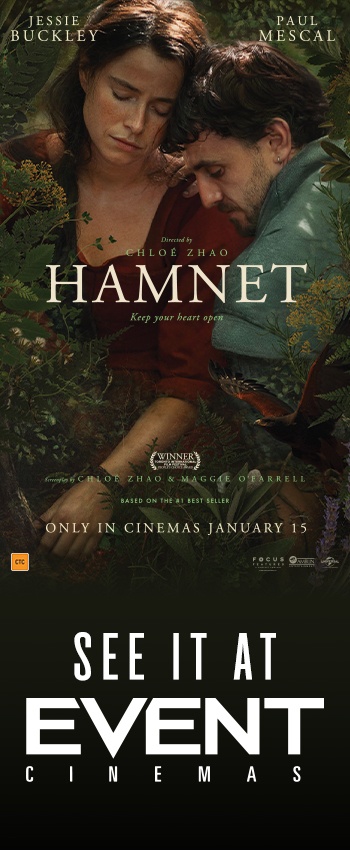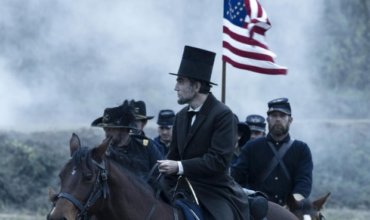Sydney 1959. Christmas is approaching and at Goodes Department store that means putting on temporary staff to deal with the rush. Lisa Miles (Angourie Rice) is a sweet and naïve 17-year-old from the suburbs, who joins the ladies’ fashion department and quickly discovers the habits and rituals of this upscale workplace. Lisa is assistant to the full-time counter staff of Fay (Rachael Taylor) and Patty (Alison McGirr). She occasionally helps out Magda (Julia Ormond), who manages the haute couture section.
Lisa is smart and bookish. She is pinning her hopes on her recently completed exams because she wants to study at university. Her father (Shane Jacobson) is not keen on the idea at all, but her mother (Susie Porter) stealthily supports her daughter. What neither parent quite sees is that Lisa aspires to a different life from theirs. A generational shift is taking place. These children of the “baby boom” have different dreams and expectations as they grow up in a fortunate, prosperous Australia. They are attracted to a wider world culturally and geographically. Lisa’s contact with the sophisticated Magda gives further power to the idea of Europe that she has created in her imagination. Anglo-Celtic Australia is being influenced by the wave of post-war Continental immigrants. Or the “reffos” as Patty calls them.
We follow Lisa’s first steps into the adult world, so LADIES IN BLACK is chiefly a coming-of-age story, but it is also about a nation redefining itself and tentatively moving away from Mother England (and towards Uncle Sam, but let’s not get ahead of ourselves). The established way of doing things is represented, and lightly satirised, by the strictness of the staff hierarchy in the Goodes store. Those who remember the 1970s telly hit Are You Being Served?, will recognise the British department store archetype for this set-up. There are also laughs extracted from the cultural divide between Australia and Europe. Magda and her friends frequent one particular café that is run by a Russian émigré because as far they’re concerned, there is no other decent coffee in Sydney. (If only they’d settled in Melbourne, eh, folks?)
The script is co-written by Bruce Beresford and Sue Milliken and adapted from the late Madeleine St John’s novel The Women in Black (1993). The pair are extremely well-credentialled in filmmaking terms. Milliken’s producer credits and Beresford’s director credits make up an impressive list of Australian and International film and television. They also have the advantage of being born at the same time as the fictional protagonist Lisa, so the film’s accuracy of wardrobe, speech, slang and attitudes of the era is in safe hands. The recreation of 1959 Sydney is a particular treat and is aided by the intermittent use of stock footage. Beresford also knew St John as they were part of that much-vaunted Sydney University generation that included John Bell, Clive James, Germaine Greer and Robert Hughes. He was introduced to the novel by James and it has taken approximately twenty years to get the project greenlit.
The cast is excellent and includes veterans like Deborah Kennedy and Danny Adcock in bit parts. Noni Hazelhurst plays the senior woman of the Ladies’ Department and Nicholas Hammond is the head man (the Mrs Slocombe and Captain Peacock equivalents). It’s always good to see Hammond putting on an English accent in his adopted country. Shane Jacobson scores all the expected laughs like the pro he is and Susie Porter does some nicely nuanced work as a mother who loves, but doesn’t understand, her clever daughter. Angourie Rice shines as Lisa. Ryan Corr is a pleasure to watch as Rudi, a Hungarian Romeo looking for an Australian wife. Julia Ormond perfectly embodies the class and the creative sensibility of Slovenian Magda. You can see right away why Lisa is dazzled by this woman.
LADIES IN BLACK is an essentially sunny look back at our recent history. Films like SILVER CITY (1984) and ROMULUS, MY FATHER (2007) are more serious takes on this country’s post-war European migrant story. This film’s remit is not to challenge and instruct, but to entertain, which it does expertly. It’s for audiences looking to enjoy some retro glamour and the work of costume designer Wendy Cork. If that sounds like your cup of Bushells, you also now have a third entry to complete a trilogy of recent movies that follow a female hero who works in a classy, 1950s department store. Write this down with your fountain pen on a legal pad: BROOKLYN (2015), LADIES IN BLACK (2018) and CAROL (2015); that’s the order I’d watch them in.
This is a lightly romantic, gently uplifting, mostly amusing story for audiences who appreciate films where there are no profanities in the dialogue, no gore splattering on the floor and no orange fireball explosions. Watch LADIES IN BLACK and be transported back to a rosier era, for a running time of 1 hour and 49 minutes. (7/10)




